Improving the Quality of Life through Exercise and Respiratory Muscle Training, Resulting in Virtual Elimination of Asthmatic Medication
Introduction
I have been clinically asthmatic since the age of fifteen but, for the last seven of those thirty years, I have all but eliminated the use of medication, whilst competing at national level in a variety of sports. It is necessary for asthmatics to use medication to prevent or relieve an attack but I do neither, despite an intense training and racing regime. In 2013, that included 936 hours of riding, 30 days of racing and an annual distance covered of 21,240 kilometres.
This report will focus on the impact of asthma in Australia, the use of medication and the accompanying side effects. My own experience with asthma will be described, along with general recommendations and my own personal advice for all asthmatics to reduce their reliance on asthmatic drugs and to safely use the lowest dose of medication possible to keep their asthma under control.
Definition
 Photobucket, 2014
Photobucket, 2014 Asthma "is due to inflammation of the air passages in the lungs and affects the sensitivity of the nerve endings in the airways so they become easily irritated. In an attack, the lining of the passages swell causing the airways to narrow and reducing the flow of air in and out of the lungs." (World Health Organization (WHO), 2014)
Impact
Asthma and Exercise Induced Asthma (EIA)
No matter the trigger for asthma, good management, accompanied by appropriate medication can "control the disease and prevent symptoms from occurring or worsening" (Australian Institute of Health and Welfare, 2014).
Asthma Medication
- Relievers: Everyone with asthma should have reliever medication. With the onset of symptoms (or may be used before exercise on doctor's advice), these fast-acting bronchodilators work within minutes and last up to 4 hours. Technically known as short-acting beta-agonists, they work by relaxing the muscle around the airways. Ventolin, Asmol, Epaq and Airomir all contain a drug called salbutamol and are usually used as a puffer, but more serious asthmatics may use a spacer or a nebuliser.
- Preventers: Used everyday to reduce symptoms of asthma by reducing airway sensitivity, redness and swelling and helps dry up mucus. The most common form are corticosteroids, anti-inflammatory medications, which come in the form of Flixotide, Pulmicort, Qvar and Alvesco. (Asthma Australia, 2014b).
Side Effects
My Personal Story - The Early Years
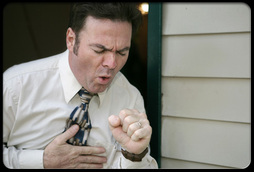 BigStockPhoto / Lisa F. Young (MedicineNet, 2014)
BigStockPhoto / Lisa F. Young (MedicineNet, 2014) Initially, this allowed me to continue my sport but, being so active, my doctor decided it would be wiser to prescribe a preventer in the form of becotide (discontinued in the UK in June 2007), an inhaled corticosteroid. My initial dose was two puffs in the morning and two at night. For the next few years, I continued to take this dose and was able to play rugby league at National level for East Leeds in England.
Reduced Dependency
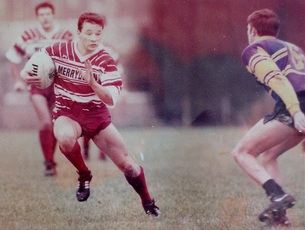 Loughborough RL 1st XIII vs Bedford College
Loughborough RL 1st XIII vs Bedford College 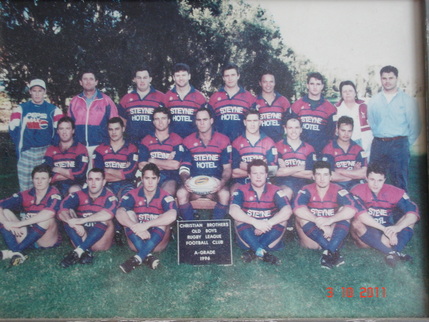 Christian Brothers 'A' Grade 1996
Christian Brothers 'A' Grade 1996 Almost Complete Elimination of Medication
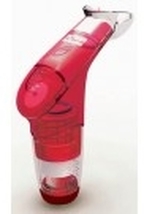 Powerbreathe Plus
Powerbreathe Plus The Powerbreathe is not merley an effective tool for improving physical performance but is also highly effective at helping asthmatics. After rigorous scientific and medical trials, Powerbreathe is now licensed for prescription in the UK for those suffering breathing problems from asthma, emphysema, heart disease and spinal injury. The research has shown improvements in lung function, reduction in medical usage, hospitalisation and absence from school or work (Powerbreathe, 2014).
It was only on 26th January 2008, during a trip to the Blue Mountains with my visiting mother, step-father and sister, that I needed to take ventolin again. The house was old and dusty and this was the stimulus for my asthma. A day later, away from the house, the symptoms were gone. I went back to not using any medication. Since that time I have only used ventolin on a handful of occasions when I've been very sick and my chest tightens.
On 20th January 2013, I went to the Bike Hub, where I conducted a bike fitness test and also met a representative for the Powerbreathe. After undergoing a series of fitness tests, including a VO2 max Test, I carried out the Powerbreathe tests and then told them my personal story. So amazed, the representative decided to record a video which is still on the Powerbreathe website and is shown below.
General Recommendations
- Exercise - According to Asthma UK (2014) "Eight out of ten people with asthma aren't doing enough exercise, often because they're worried it will trigger their symptoms". This is a disturbingly, high number but the reality is exercise helps improve lung capacity, increases stamina and reduces anxiety about asthma, while increasing confidence.
- Breathing Exercises - An awareness and control of breathing has been shown to help control asthma symptoms but more so in reliever use and rarely in preventer use (Asthma Australia, 2014a). Interestingly, Asthma Australia states that there seems to be no change in lung function and little impact on the underlying lung problems such as inflammation and go on to say that breathing exercises probably help by controlling breathing, stopping symptoms from getting worse. During an attack, sufferers become anxious leading to ineffective fast, short breaths. By using controlled, deeper breaths the sufferer is more relaxed and the breathing is more efficient. This is further enhanced by breathing through the nose to warm and humidify the air before it reaches the lungs.
- Diet and nutrition - Being overweight can have a significant negative effect on asthma symptoms and control, but a sensible, healthy balanced diet incorporating fresh fruit and vegetables, fish, lean meats, whole grains, low fat dairy products and healthy fats, should be followed. Some research suggests that specific supplements containing magnesium, selenium and fish oil have a potentially positive effect on asthma symptoms (Asthma Australia, 2014a).
- Quit Smoking - Smokers tend to need higher doses of corticosteroids and should therefore aim to reduce, and ideally, quit smoking in order to reduce their dosage.
My Personal Recommendations
I can not speak highly enough of the Powerbreathe, which has helped me to virtually eliminate the use of any type of medication. It is inexpensive, easy-to-use and takes less than 4 minutes of time a day. Combining this with a regular exercise programme and a sensible, balanced diet will undoubtedly improve the quality of an asthmatics life. Small gains physically lead to unmeasurable gains in the quality of life. Even I was amazed to find, during my research for this article, that it has been over seven years since I stopped using asthmatic medication on a regular basis and that during this time, I have only used ventolin on very rare occasions.
I have to stress that asthma varies significantly between individuals, ranging from mild to severe and with a multitude of triggers. No two people are the same, and their response to medication or training will vary wildly. However, it is a common theme of asthma foundations, asthma research and individual experience that engaging in positive steps, such as exercise, will lessen the reliance on medication and lead to positive physiological changes. My life is considerably richer for the steps I have taken to improve my lung function and I am more comfortable (and far healthier) now that I have virtually eliminated my reliance on all forms of medication.
Future Intentions
References
Asthma Australia (2014b). Medications FAQs. Retrieved from http://www.asthmaaustralia.org.au/Medications_FAQs.aspx
Asthma Australia (2014c). Side Effects. Retrieved from
http://www.asthmaaustralia.org.au/side_effects.aspx
Asthma UK (2014). Exercise. Retrieved from
http://www.asthma.org.uk/knowledge-bank-living-with-asthma-exercise
Australian Bureau of Statistics (2013). Asthma. Retrieved from
http://www.abs.gov.au/ausstats/[email protected]/Lookup/by%20Subject/4338.0~2011-13~Main%20Features~Asthma~15
Australian Institute of Health and Welfare (2014). Trends in asthma. Retrieved from http://www.aihw.gov.au/access/201111/feature/asthma.cfm
Behind the News (2011) Asthma. (Video File). Retrieved from
http://www.who.int/respiratory/asthma/en/
BBC Sport Academy (2014). Athletes with Asthma. Retrieved from http://news.bbc.co.uk/sportacademy/hi/sa/treatment_room/newsid_2340000/2340911.stm
Hatfield, H. (2014). The Athlete's Guide to Exercise-Induced Asthma. Retrieved from http://www.webmd.boots.com/asthma/features/athletes-guide-exercise-induced-asthma
Health Media Ventures (2014). Star Athletes with Asthma. Retrieved from http://www.health.com/health/gallery/0,,20306639_1,00.html
Healthline (2014). Famous Athletes with Asthma. Retrieved from
http://www.healthline.com/health-slideshow/famous-athletes-with-asthma
Hutchinson, A. (2012). Why Asthma doesn't Stop Elite Athletes. Retrieved from
http://www.theglobeandmail.com/life/health-and-fitness/fitness/why-asthma-doesnt-stop-elite-athletes/article4445211/
MedicineNet (2014). Asthma Pictures Slideshow: An inflammatory Disorder of the Airways. Retrieved from http://www.medicinenet.com/asthma_pictures_slideshow/article.htm
National Asthma Council Australia (2014). Asthma Facts. Retrieved from http://www.nationalasthma.org.au/understanding-asthma/asthma-facts
National Institutes of Health (NIH). (2011). Jackie Joyner-Kersee: Living with Asthma. Retrieved from http://www.nlm.nih.gov/medlineplus/magazine/issues/fall11/articles/fall11pg9.html
National Library of Medicine (NLM). (2012). Archives. Retrieved from http://www.nlm.nih.gov/archive/20120918/hmd/breath/Faces_asthma/facespres2.html
Powerbreathe (2014). Powerbreathe the world's no.1 breathing trainer. Retrieved from http://www.powerbreathe.com/
World Health Organization (WHO) (2014). Chronic Respiratory Diseases. Retrieved from
http://www.who.int/respiratory/asthma/en/
Appendix
Athletes with Asthma
Some of the following elite athletes developed asthma as children, while others were already competing at the highest level. All of them appear to have continued to use asthma medication, to varying degrees.
In reference to how asthma does not appear to hinder elite athletes, Alan Hutchinson (2012) reported;
If you’re vying for gold in a sport that demands a lot of huffing and puffing, you’d think that asthma would be a pretty significant disadvantage. But if trends from recent Olympic Games hold true, about 700 of the 10,000 athletes currently competing in London have confirmed asthma diagnoses – and those athletes will be twice as likely to medal as their non-asthmatic peers.
|
|
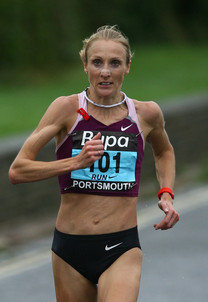 www.zimbio.com
www.zimbio.com - Paula Radcliffe: GB Marathon Runner / Olympian: Paula started running at seven but was diagnosed with asthma (EIA) at fourteen. She still holds the World Record in the Marathon with a time of 2.15.25 and she has run four out of the five fastest marathon times in history. In 2004, she said she used her reliever before and after an event and when she had a cold she was extra careful.
 sportsillustrated.cnn.com
sportsillustrated.cnn.com - Amy Van Dyken: US Swimmer: Amy''s childhood asthma was so severe she couldn't even climb stairs so, on her doctor's advice, she took up swimming at the age of six. Despite medication, frequent asthma attacks and just 65% lung capacity, she went on to win 6 Gold Medals - 4 at Atlanta 1996 (50m freestyle; 100m butterfly; 4x100m freestyle; 4x50m medley) and 2 at Sydney 2000 (4×100 medley relay; 4×100 freestyle relay).
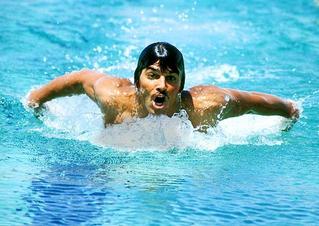 www.zimbio.com
www.zimbio.com - Mark Spitz: US Swimmer: Winner of 9 Gold Medals in the 1972 Munich Games, where he set new world Records in all the events. In 2000, he was voted 'Athlete of the Century' in Water Sports and 'Sports Illustrated' voted him as one of the six Greatest Olympians ever.
 www.szuse.hu
www.szuse.hu - Jerome 'The Bus' Bettis: US Running Back, American Football.: Diagnosed with asthma at 15, he went on to play thirteen seasons in the NFL. Named 'Rookie of the Year' in 1993 playing for the LA Rams, he later won the Superbowl with the Pittsburgh Steelers in 2006. He is the sixth leading rusher of all time. In 1997, he suffered an asthma attack on the field, due partly to the extreme heat and humidity. After a nebulizer and shot, he returned to successfully finish the game, describing the experience like 'someone putting a bag over your head'.
 www.cyclosport.org
www.cyclosport.org - Miguel Indurain: Spanish Cyclist: Won five consecutive Tour De France (1991-1995) and the Olympic Time Trial (Atlanta 1996).
- Other successful asthmatic athletes include US swimmers Tom Dolan, Peter Vanderkaay and Kaitlin Sandeno, British swimmer Adrian Moorhouse, basketball's Dennis Rodman, football's Paul Scholes, cyclist Jan Ullrich, wheelchair athlete George Murray, cricket player Ian Botham and tennis player Justine Henin.

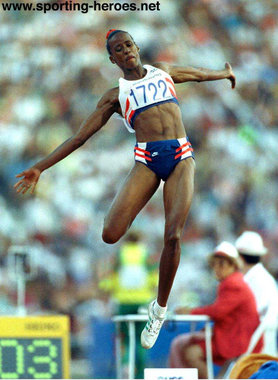
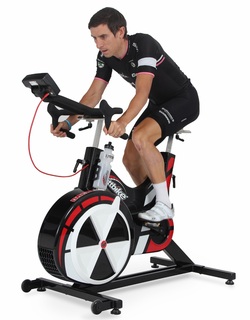
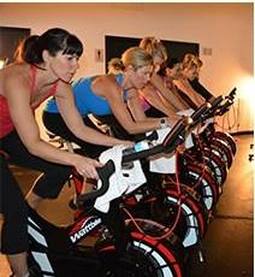
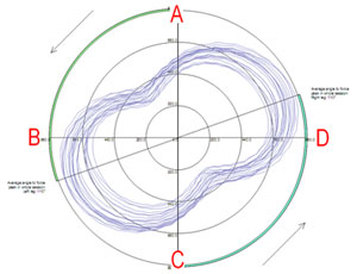

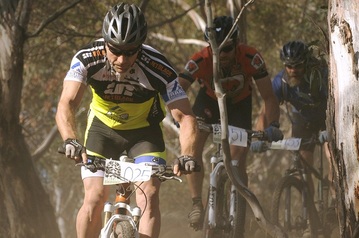
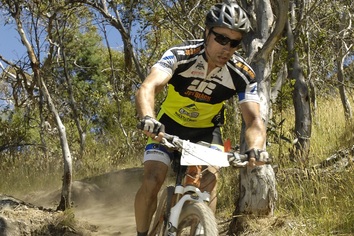
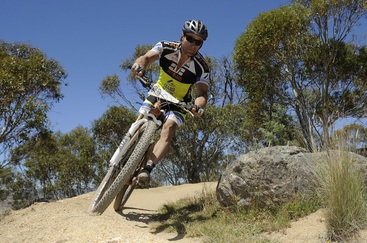





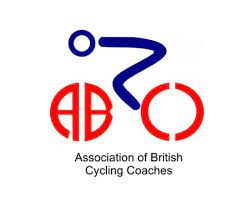
 RSS Feed
RSS Feed
